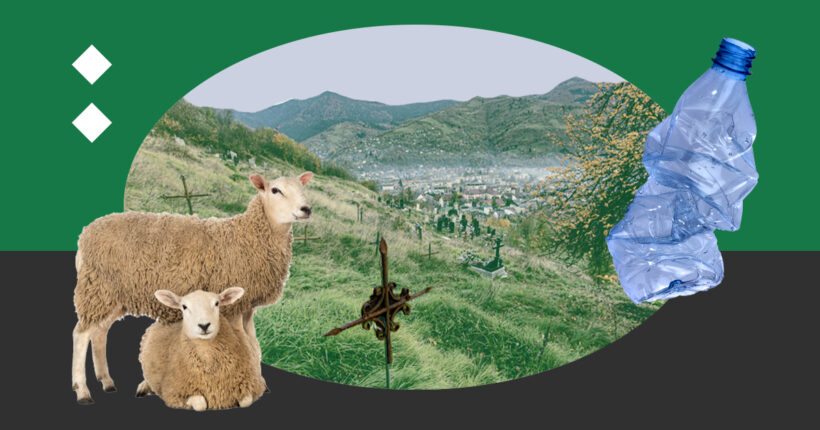
The Carpathian National Nature Park was included in the World Network of UNESCO Biosphere Reserves on February 15, 1993, and it received the status of a biosphere reserve on November 26, 1993. The reserve is about 66.5 thousand hectares and is the nature conservation core of the UNESCO Biosphere Reserve, with almost 137 thousand hectares around it — the transit zone of the reserve. It does not have nature protection status, but it is a mandatory element of reserves. Lands of forestry enterprises and settlements are located there.
Now, the Carpathian Biosphere Reserve includes six protected massifs — these are favorite tourist hiking spots and two botanical reserves. Here, the foothill forests, mountain beech, mixed and spruce forests, and subalpine and alpine meadows are represented, little disturbed and practically untouched by human activity. Almost 90% of the reserve territory is covered by forests, mostly unaffected by human activity.

Carpathian Biosphere Reserve. Photo: Mykola Tymchenko
Ecorubic launched a series of articles about UNESCO biosphere reserves — those occupied, on the demarcation line, and deep in the rear. We tell how the war affects these territories so the world learns more about the lives of people and nature in Ukraine.
Rakhiv mists and bells
The Carpathian Biosphere Reserve is located in the Zakarpattia region in four administrative districts — Rakhiv, Tyachiv, Berehove, and Khust. It includes about 20 settlements with a population of about 100,000 people. Our team went here at the end of autumn, choosing the small town of Rakhiv as a starting point. It is located at the confluence of two mountain rivers — the White Tisza and the Black Tisza.
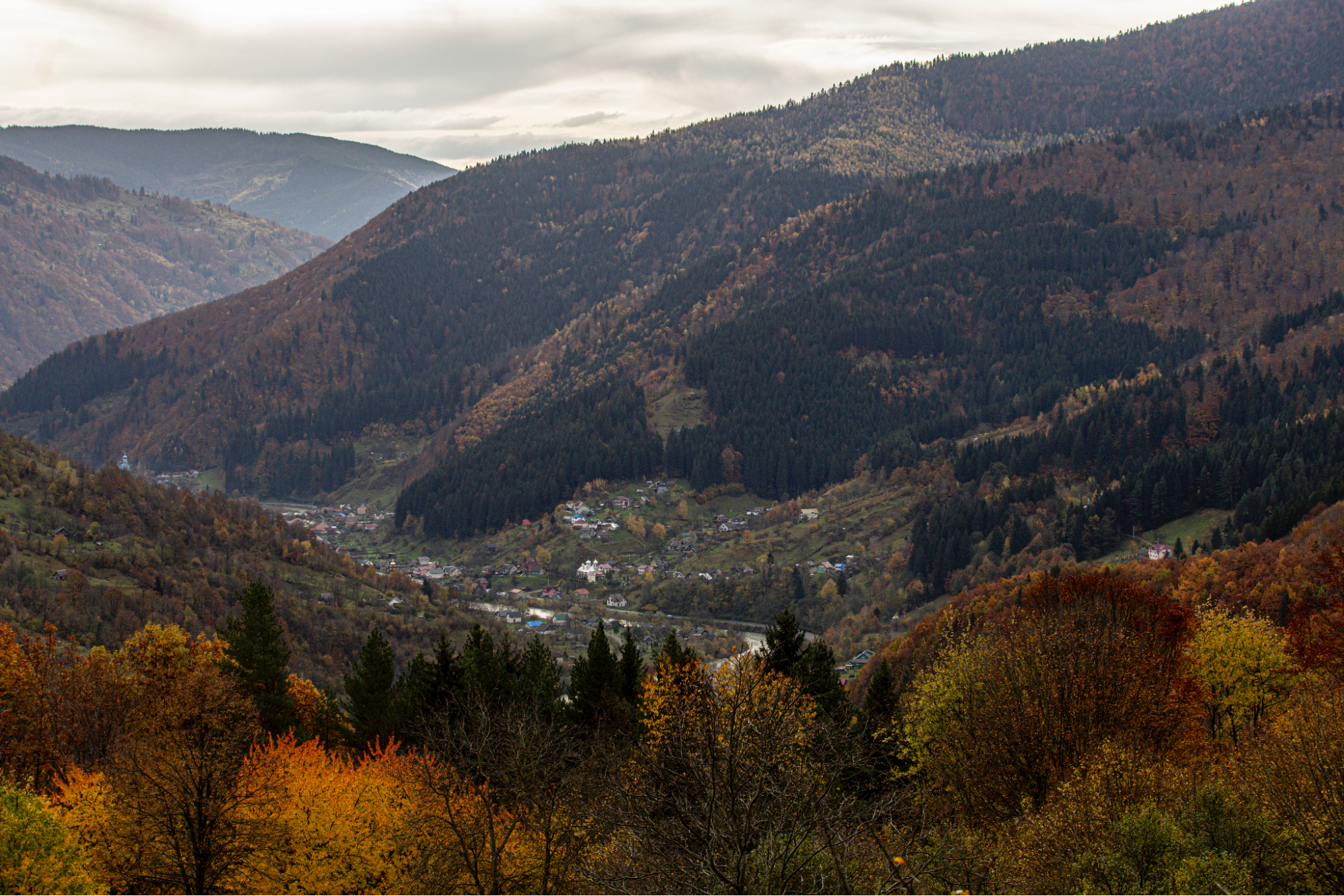
Carpathian Biosphere Reserve, view of Rakhiv. Photo: Mykola Tymchenko
Surrounded by mountains on all sides, Rakhiv looks mystical. Covered in fog, it seems to be hiding in the Tisza valley. In 20 minutes of leisurely walking, you can walk from one side of the city to the other and simultaneously explore its surroundings, gradually spreading upwards. No matter where you are in Rakhiv, during the church bells, you will hear them from everywhere — the sound echoes off the hills and, one way or another, reaches your ears.
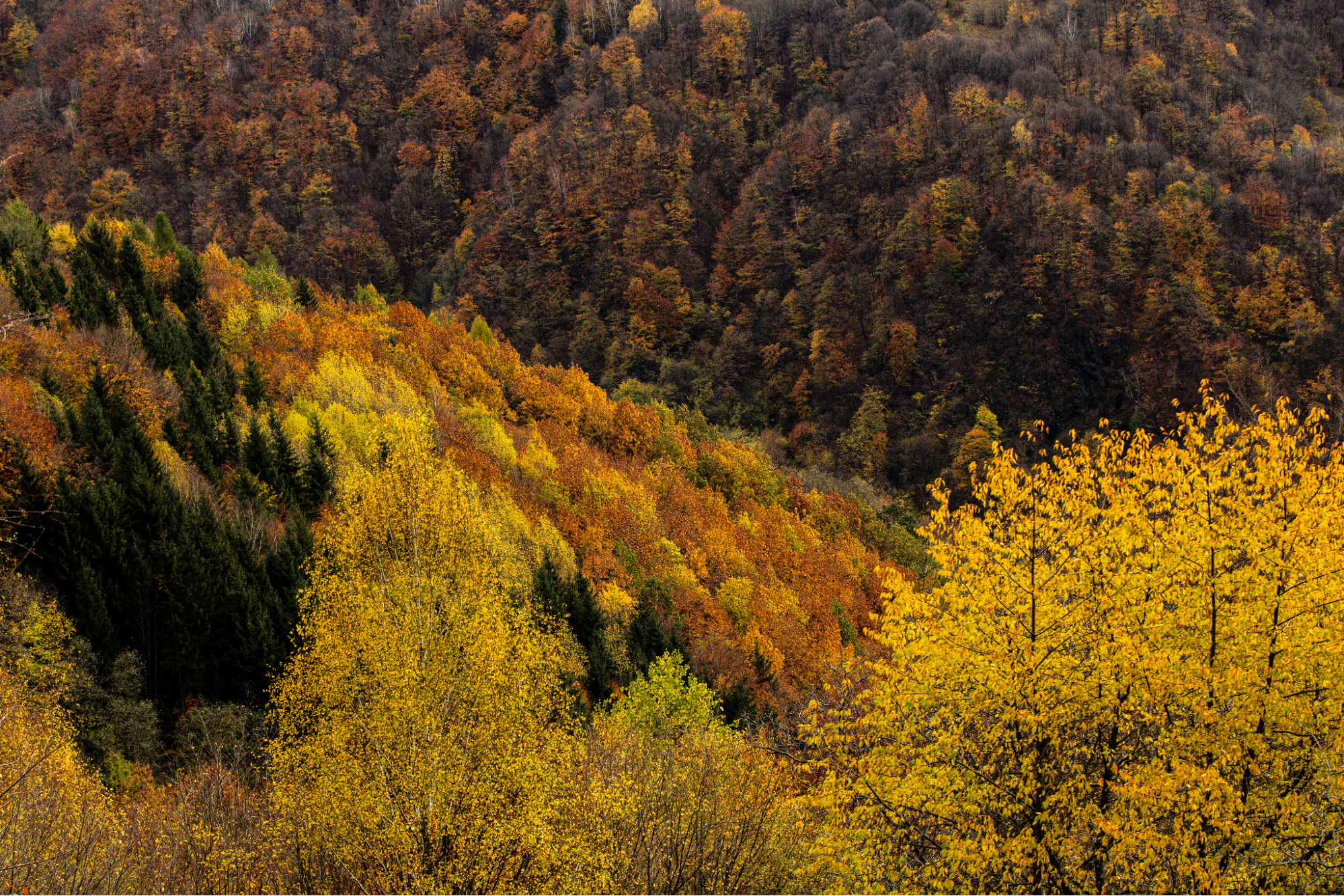
The majority of the forests of the Carpathian Biosphere Reserve are ancient forests, that is, those that have not been subject to the destructive influence of humans. Photo: Mykola Tymchenko
Such church bells found our team not far from the Carpathian Biosphere Reserve, where the institution's management, nature protection, ecological and educational, scientific, and recreational departments are located. With an employee of the reserve, we got up from the administrative buildings to explore the surroundings better. The path, made of stones, covered with clay and tree roots sticking out of the ground here and there, looked dangerous. An untrained person needs about 30 to 40 minutes to climb it, but locals walk it daily.
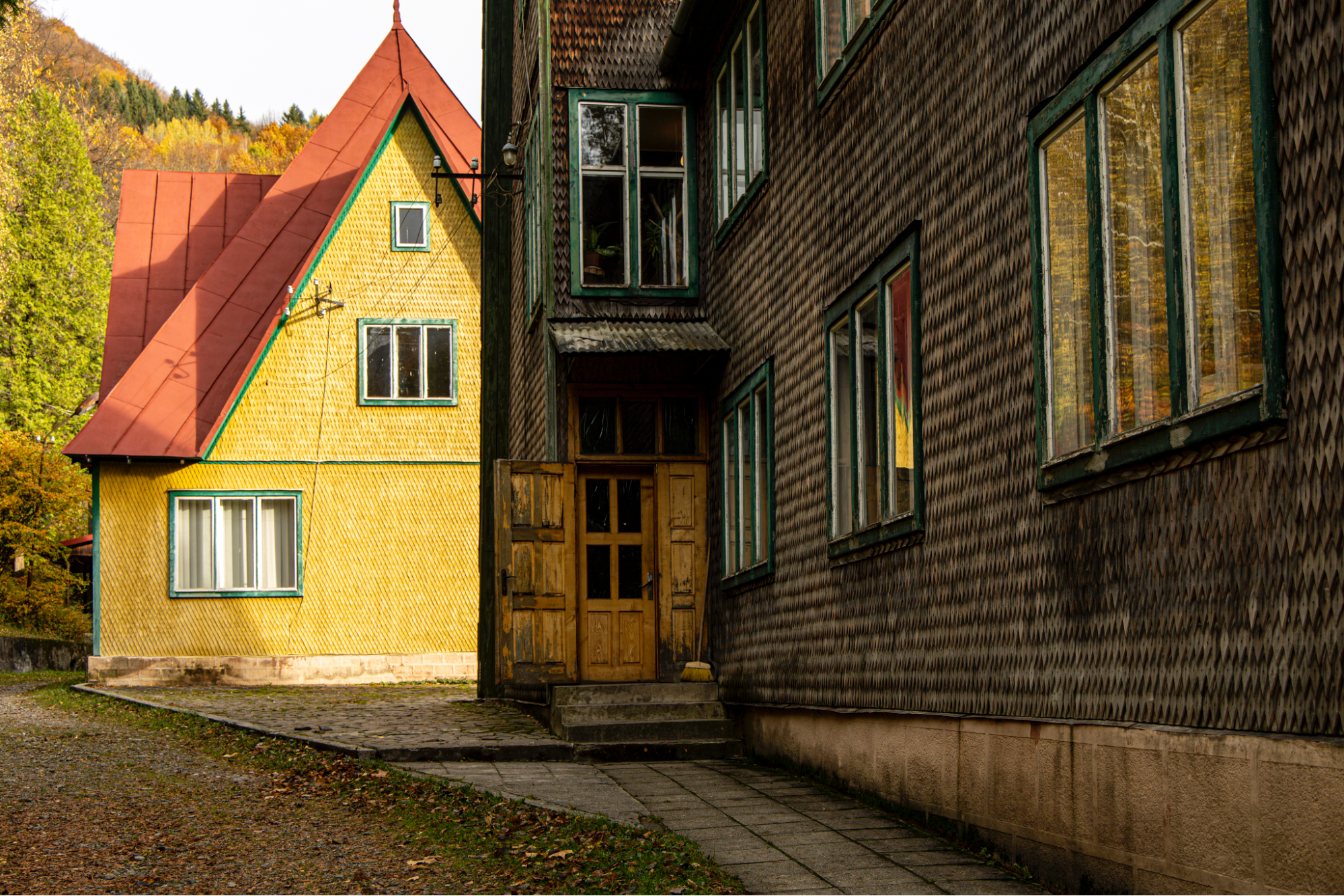
The base of the Carpathian Biosphere Reserve. Photo: Mykola Tymchenko
What is the problem?
A forest encroaching on the meadows
Our road leads us to a small clearing on a slope with several wooden houses. There is electricity, but the small wooden houses do not look modern.
The territory of the reserve is not gasified. Therefore, the population still uses stove heating, and firewood is harvested both in the territory of the anthropogenic zone of the reserve and in the neighboring forests of state forestry enterprises. Due to strict environmental legislation and the complexity of bureaucratic procedures, preparing for winter is a challenge.
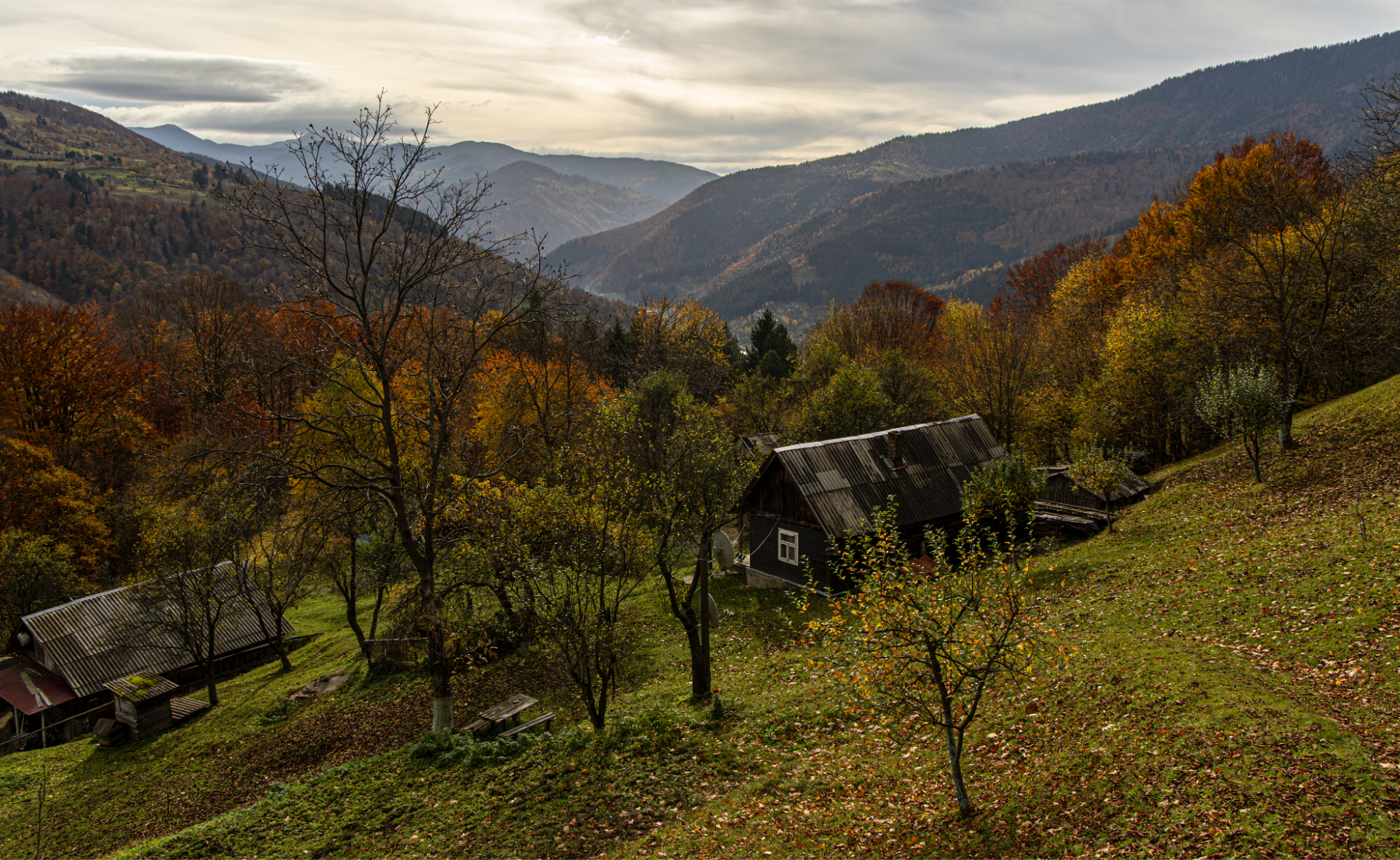
Settlement of people who live high in the mountains. It is impossible to get here by car. Photo: Mykola Tymchenko
A permit for felling in the reserve must be obtained from the Ministry of Environmental Protection and Natural Resources of Ukraine. Because of this, the institution starts collecting firewood late every year. This year, the ministry greenlighted only at the end of October, after the heating season's beginning. Therefore, everyone is looking for a way out of the situation. On the way to the administration, we noticed a man collecting dead wood on the roadside. Such wood will not give much heat, but in the absence of other options, it is also a way out of the situation.
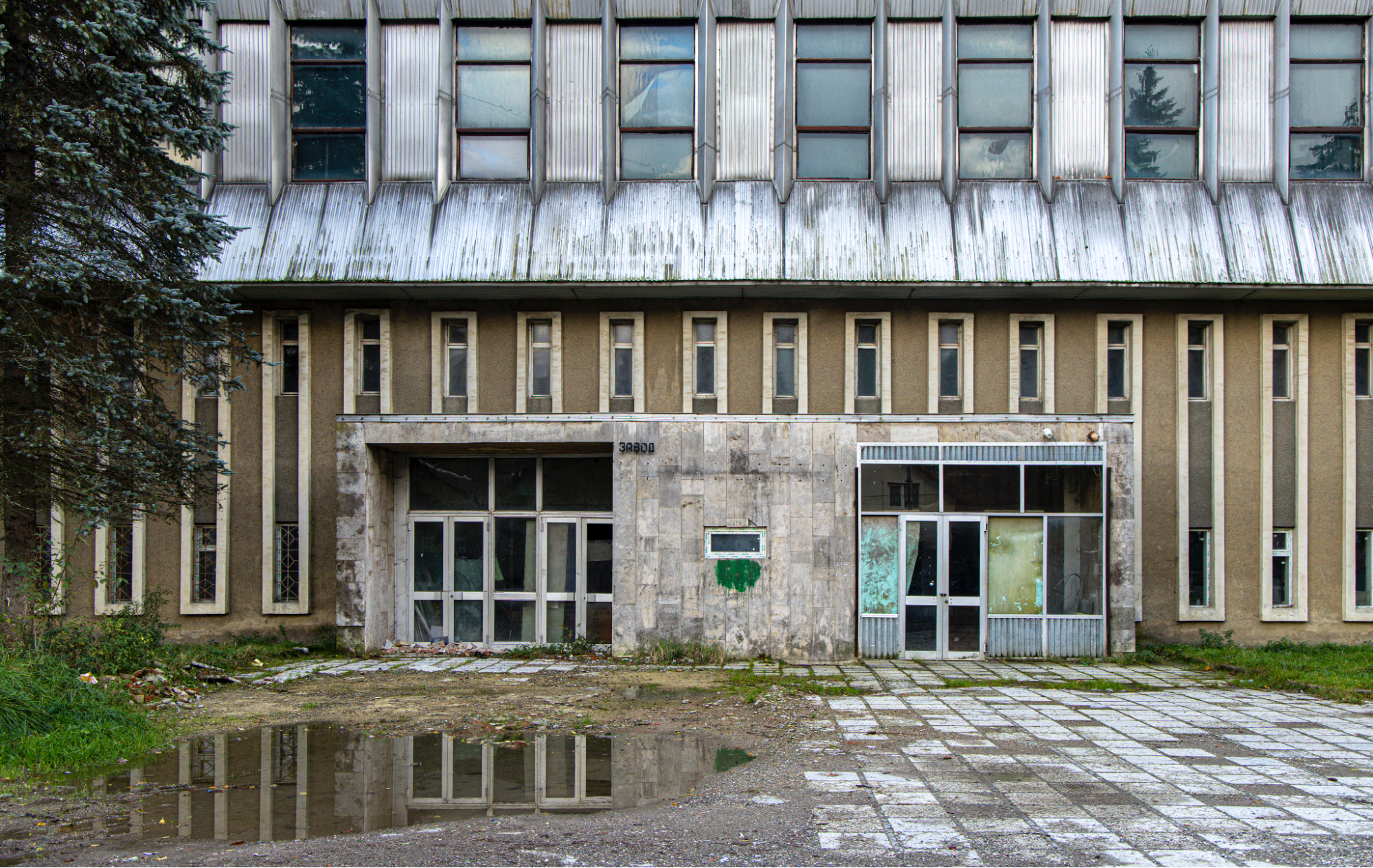
The Soviet heritage of the city of Rakhiv. The former factory is now in an abandoned state. Photo: Mykola Tymchenko
We can see the cemetery well from where we are standing. We will get there later — a large number of Ukrainian flags honor the fallen soldiers from this region. In Zakarpattia, military cemeteries are not uncommon — they are filled with flags, and the roads leading to them are covered with flowers on both sides. The number of conscripts in Ukraine, as well as the number of deceased, is not officially announced, but such places speak for themselves.

Flat plots of land are worth their weight in gold for the inhabitants of the Carpathians. The cemetery in Rakhiv was once arranged in a lowland near the church. Now, it is growing up a steep slope. Photo: Mykola Tymchenko
The majority of the population of Zakarpattia lives in villages (62.9%), including the highlands. With the beginning of the war, the western regions of the country received the largest number of refugees from the central, southern, and eastern regions of Ukraine, and along with this, the problem of migration intensified. Because many Ukrainians from this territory had gone to earn money abroad, with the beginning of the war, many of them remained there.

Modernization and traditions. The decoration of the facades is typical for the region. Photo: Mykola Tymchenko
Previously, the traditional type of economic activity was high-mountain pasture management and small-scale farming. However, a common picture can be seen in the whole region now — the forest is actively encroaching on the polony, which means this activity is declining.
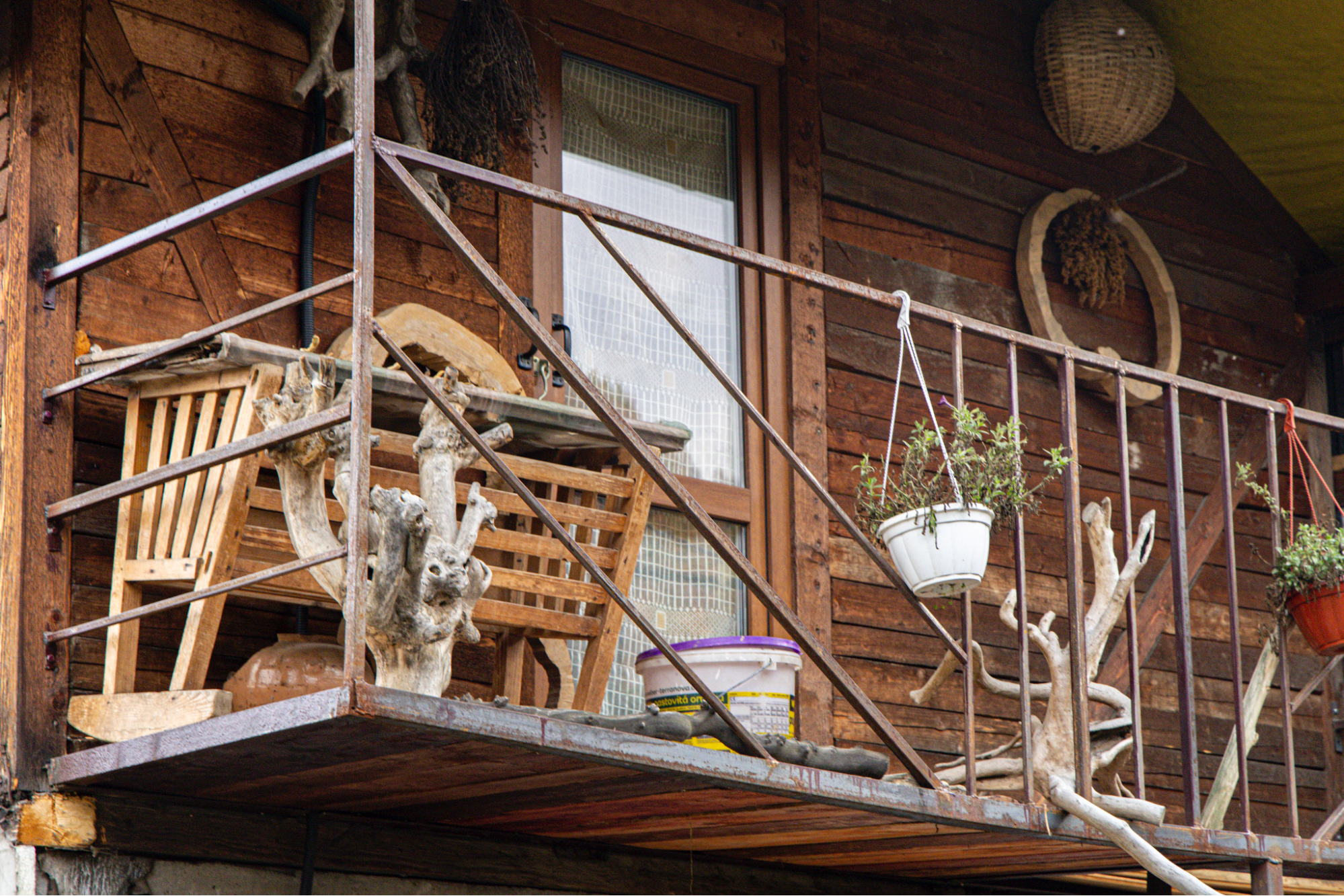
The balcony of the house of a craftswoman from Rakhiv, who makes wood products. Photo: Mykola Tymchenko
Areas on the slopes were used for cattle grazing or harvesting hay. The trees simply did not have time to grow, and all the vegetation was mowed down every year.
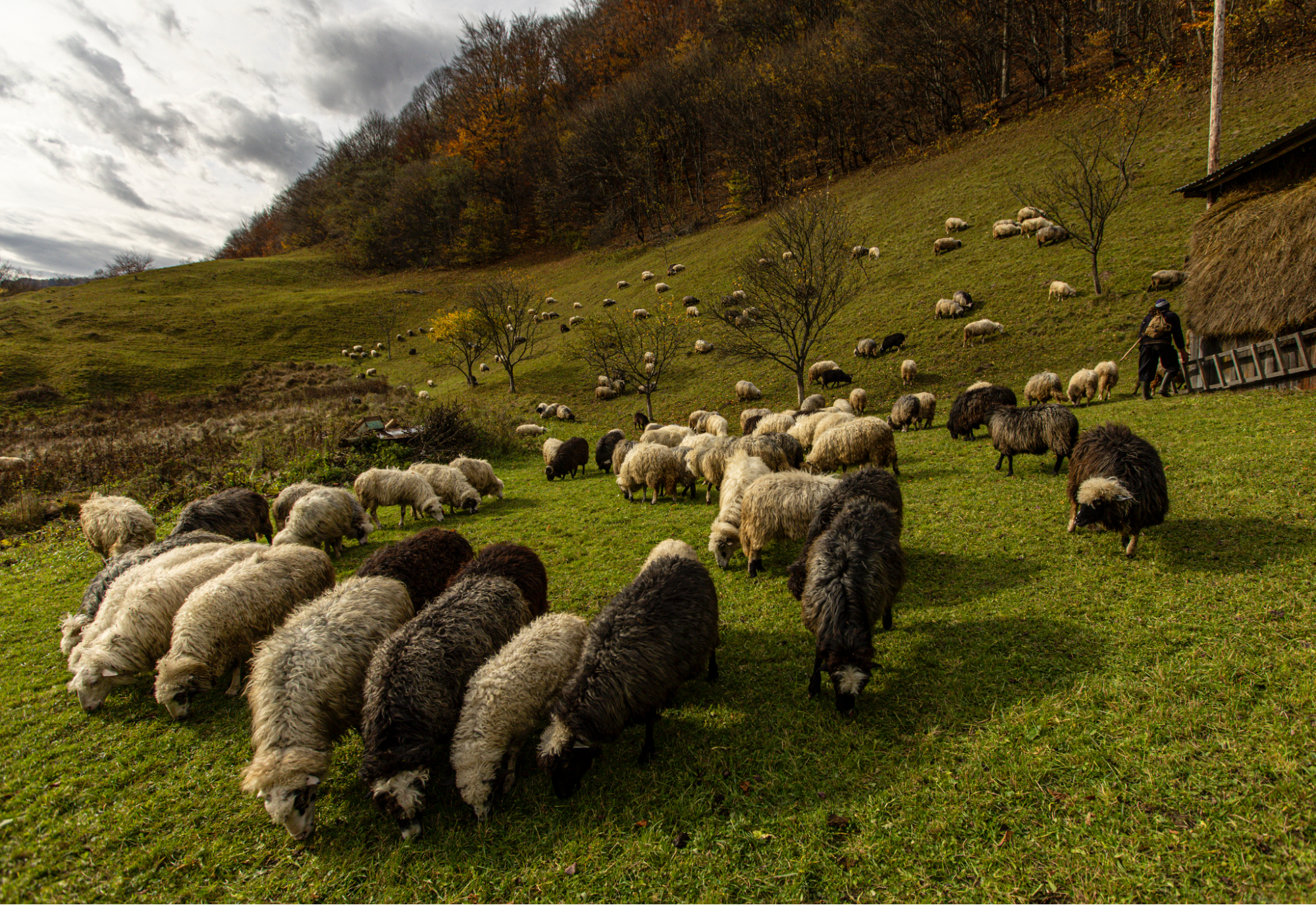
Flock of 230 sheep, Rakhiv. Photo: Mykola Tymchenko
On the outskirts of Rakhiv, two shepherds with their small herd are coming to meet us. And although fewer and fewer people keep cattle, the economy's structure remains traditional.
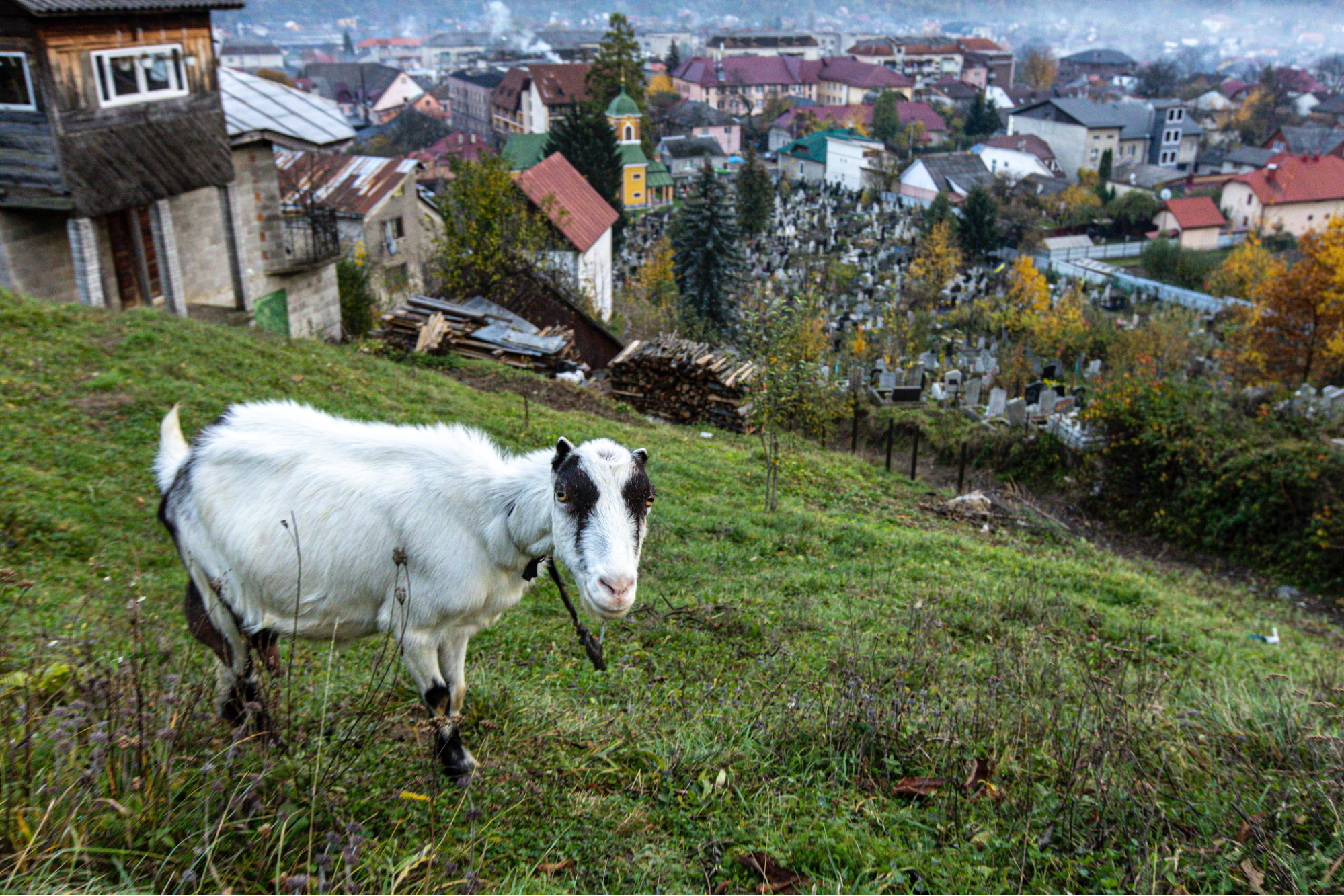
Rakhiv, view from the mountain. It is not uncommon to see domestic birds or livestock in the city. Photo: Mykola Tymchenko
Every spring, the community unites flocks of sheep, leaving unique marks on each. After that, they measure how much milk each sheep gives, and then the flock is given to shepherds for full provision. Two or three men go high into the mountains, live in a mountain hut called a kolyba, and descend to the village only at the end of autumn.
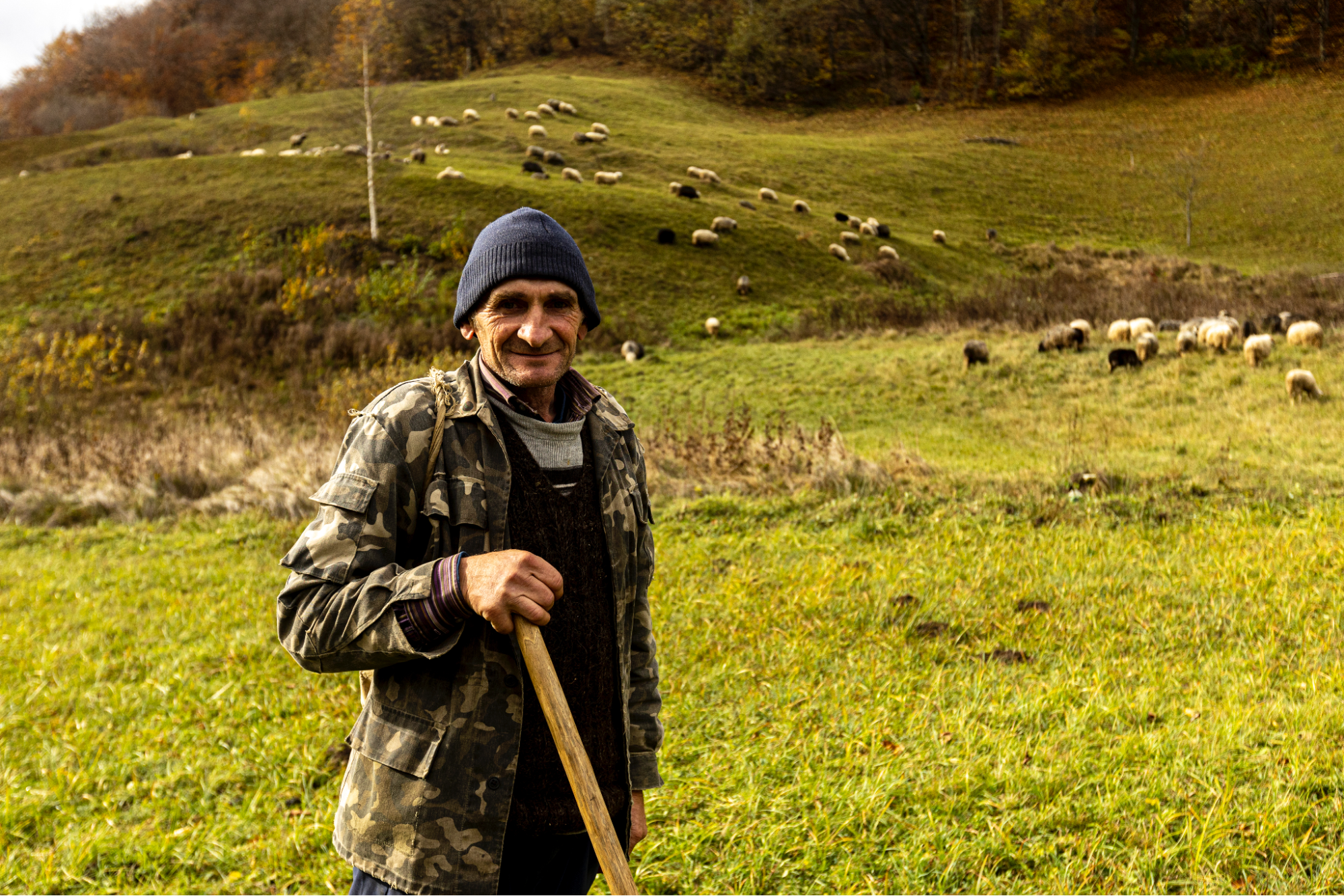
A shepherd bringing down a flock of sheep from the mountains. Photo: Mykola Tymchenko
All this time, the shepherds care for the animals, milk them, and make cheese, which is divided proportionally between the owners, depending on the number of sheep. Dogs often help to look after the flock. The shepherds we meet also have a dog named Hutan.
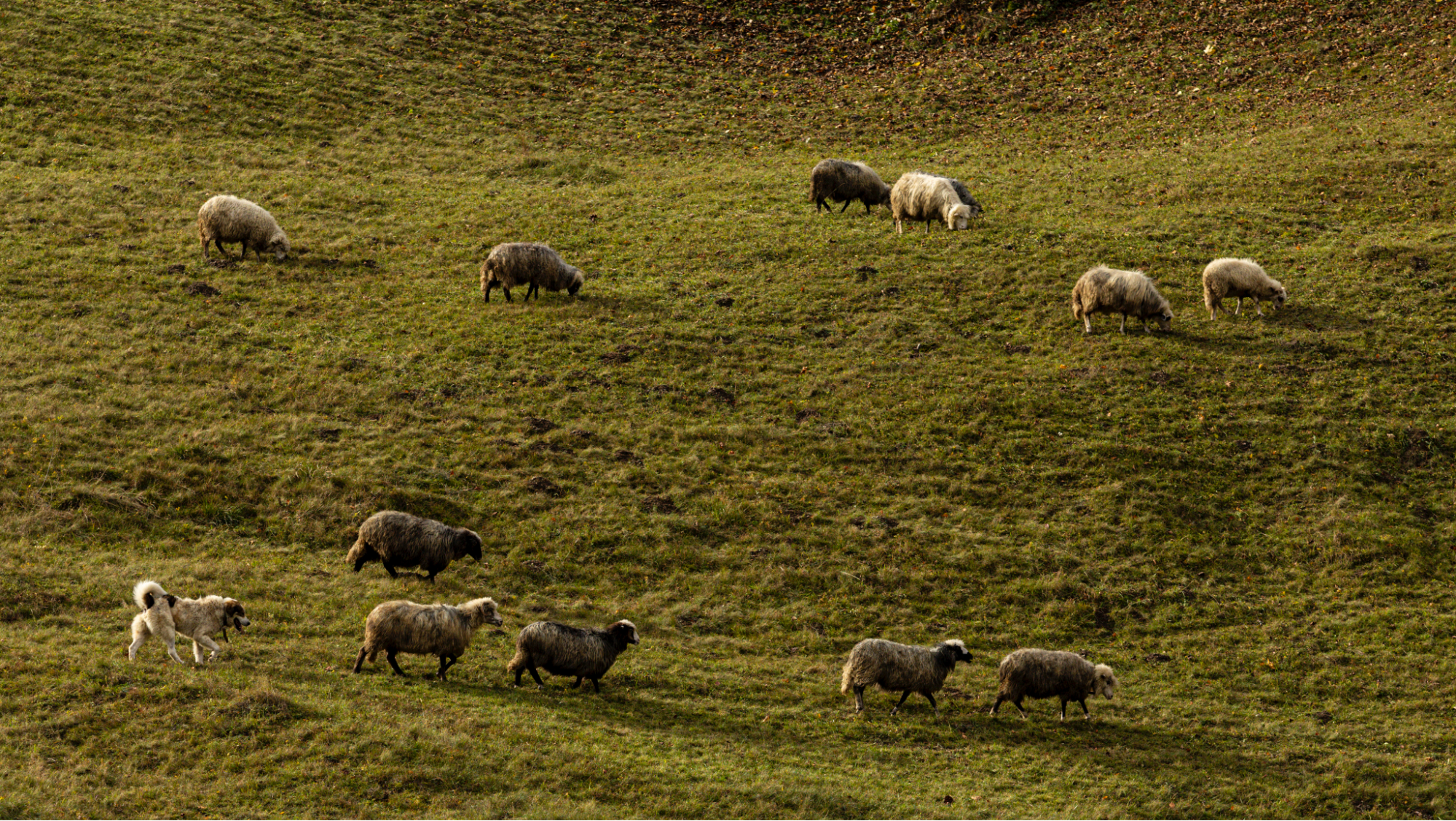
From sheep's milk, residents make the traditional cheese of the region — bryndza. Photo: Mykola Tymchenko
The flock we saw has only 230 sheep. Earlier, some 30 or 50 years ago, such herds were twice or three times larger, and all because such activity is unprofitable without state support. Instead, over the past few decades, tourism activity has been actively developing in the region.
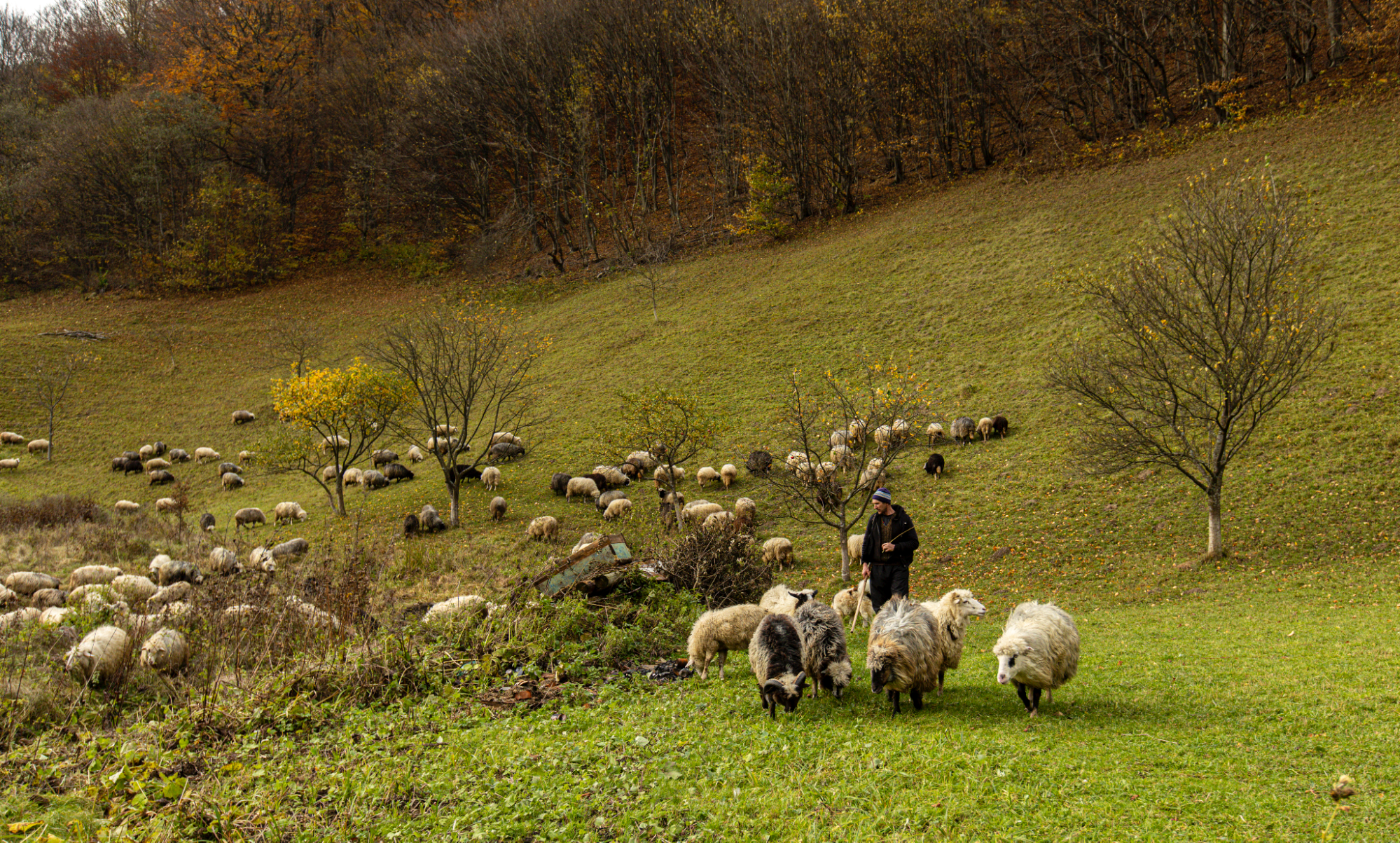
People keep fewer and fewer sheep, and meadows that used to be mowed are overgrown. A clear example is the forest of young trees behind the flock. Photo: Mykola Tymchenko
A plastic bag in crystal clear water
However, the gradual abandonment of traditional industries is not the region's main problem. Along with time, the appearance of tourists, and the reformatting of everyday life, the consumption habits of residents have changed. The problem we are talking about now exists all over the world. But if in other, more geographically accessible regions, it is solved centrally, the solution for mountainous areas in Ukraine is either not yet available or is solved at the level of individual communities.
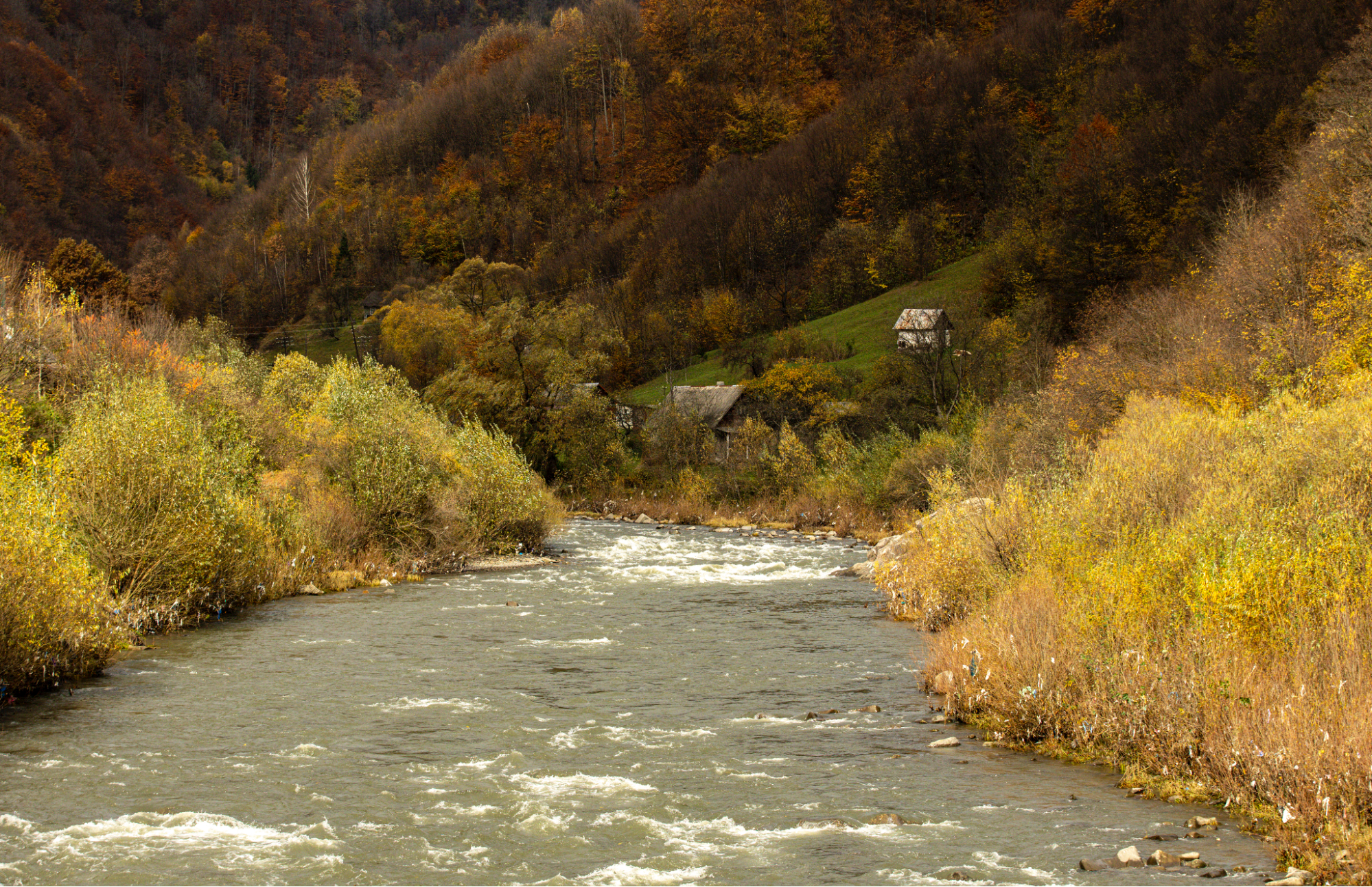
The Tisza River, the vicinity of Rakhiv. Photo: Mykola Tymchenko
We are talking about garbage that covers the banks of mountain rivers. The water, which is crystal clear on a sunny day, carries bags, plastic bottles, food packaging, and a lot of other waste.
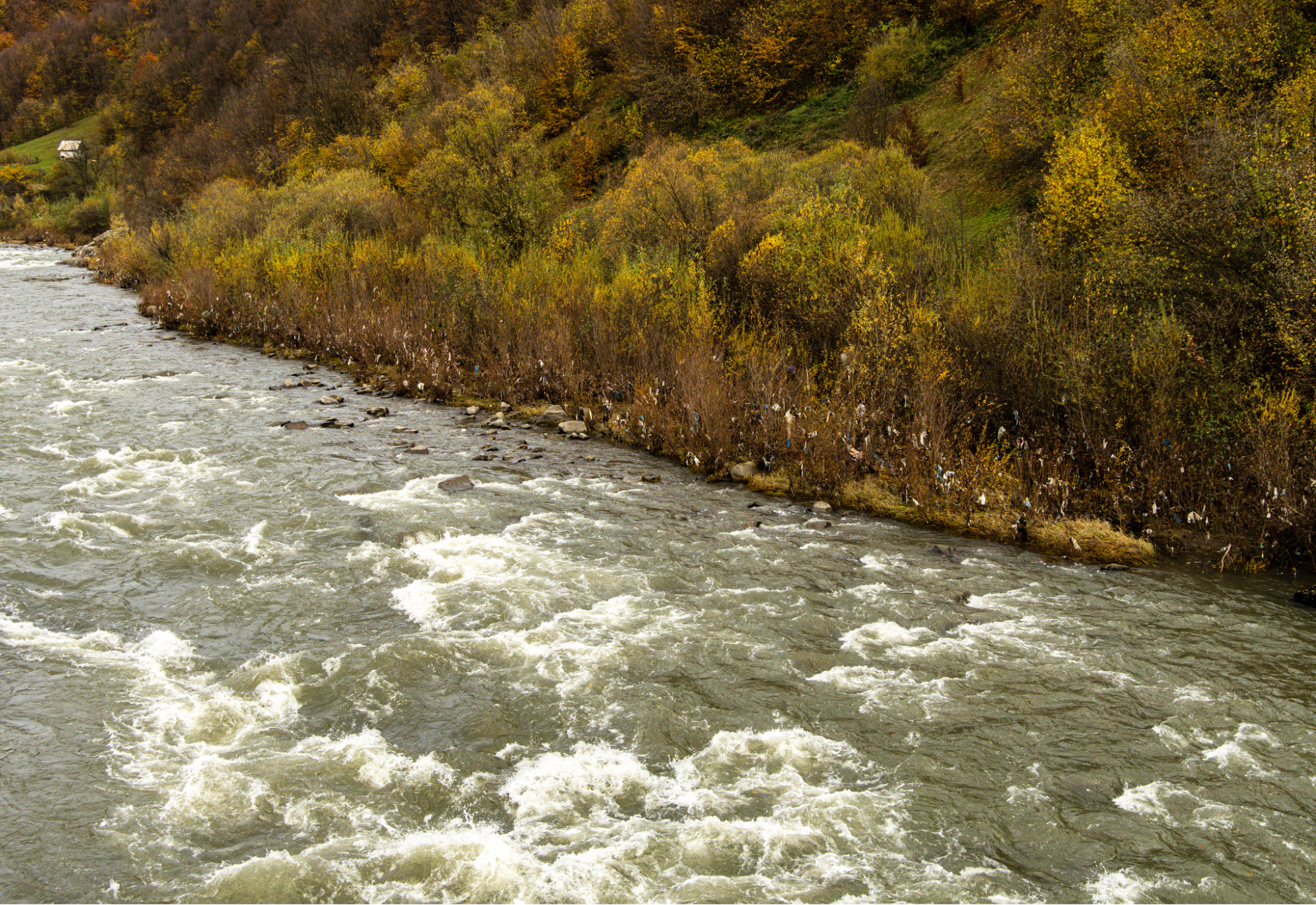
Standing at the confluence of White Tisza and Black Tisza, we see pieces of polyethylene fluttering on the branches of small trees, like ribbons that someone tied to make a wish. Photo: Mykola Tymchenko
In the region, the problem of garbage removal has not been solved for many years. Currently, as we were informed by the administration of the reserve, garbage collection, and removal are organized in some communities of the biosphere reserve. Still, because there are only small towns or villages here, often with bad roads, it is almost impossible to organize garbage removal in most of them. That is why natural garbage dumps appear on the banks of rivers near settlements. During floods, the water washes away this garbage, a global problem that locals say has only gotten worse during the war, as the amount of waste has increased as the number of displaced people has increased.
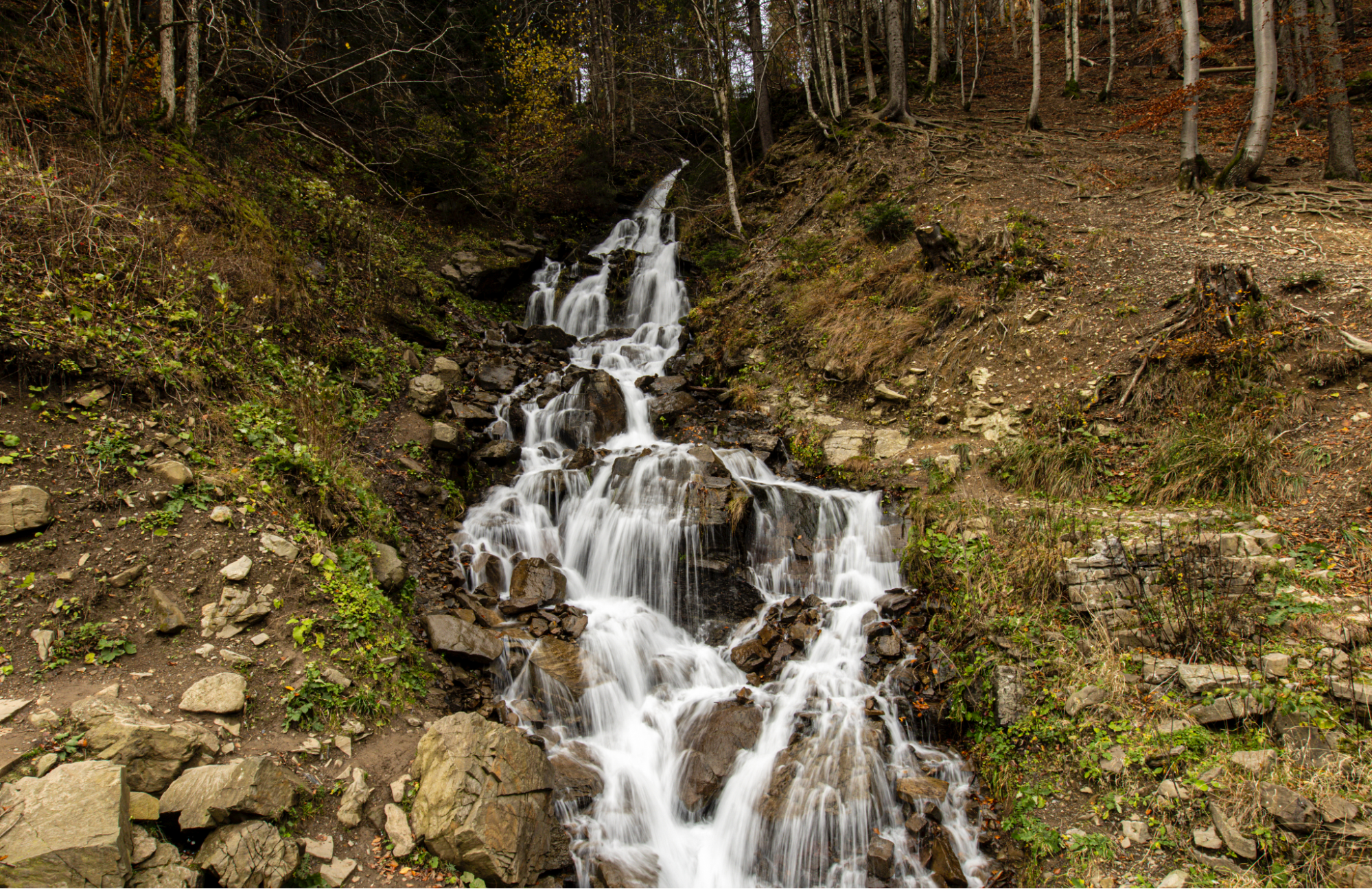
There are many waterfalls on the Carpathian Biosphere Reserve territory. Tourists like to come to them, especially in the spring, when they become many times larger. Photo: Mykola Tymchenko
This problem cannot be called local. The Tisza River is one of the largest tributaries of the Danube, the catchment basin of which is formed in the Carpathians, and its waters flow through Ukraine, Romania, Hungary, Slovakia, and Serbia. In total, it is about 157 thousand square kilometers. At most, 98% of Hungary's drinking water comes from abroad, a significant part of which is supplied by the Tisza River, the sources of which are located near Rakhiv. However, this water cannot be called pure. Only in 2023, Hungary complained that the waters of the Tisza brought 90 tons of plastic waste from Ukraine, which occurs every year.
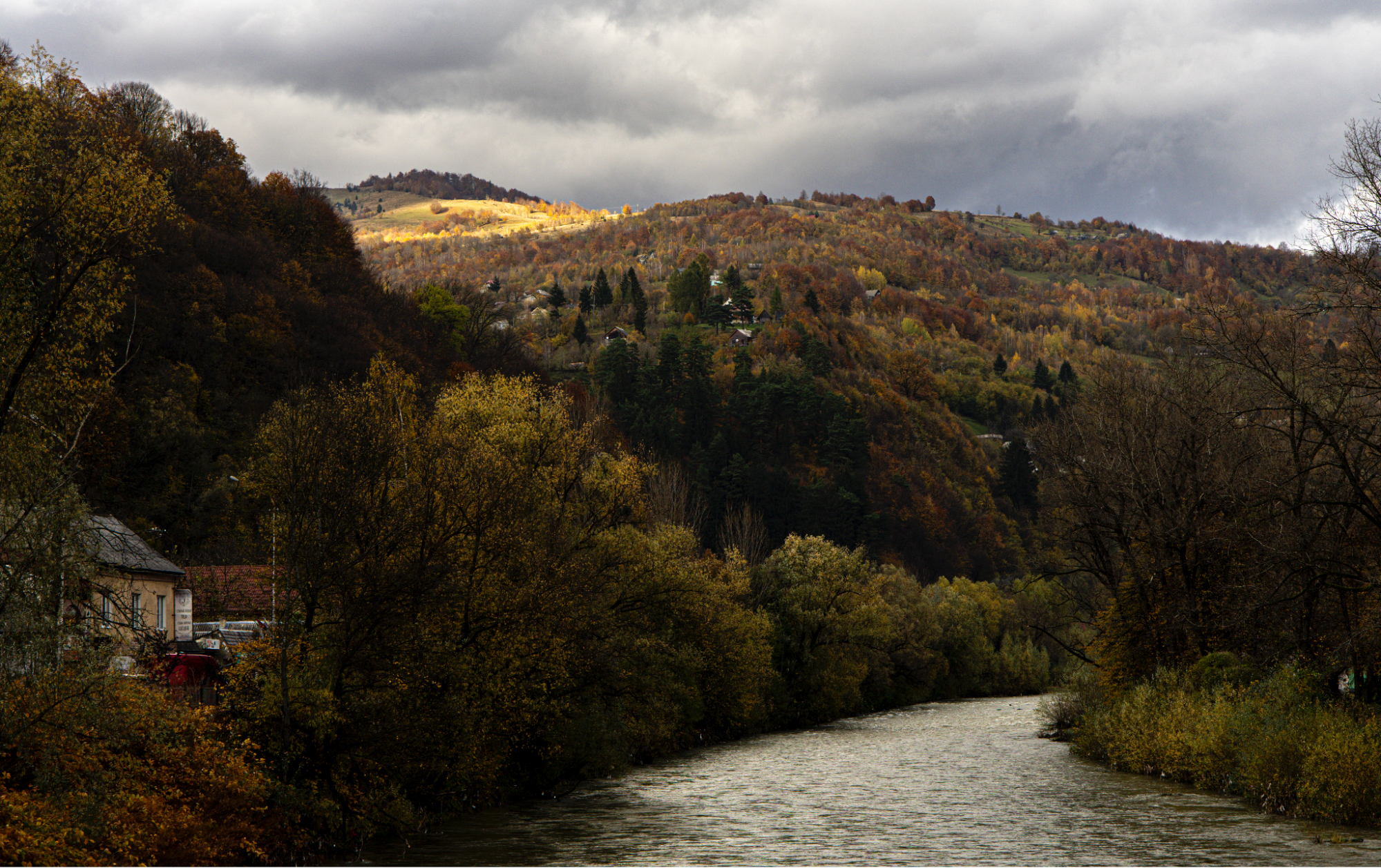
The Tisza River on the territory of the Carpathian Biosphere Reserve. Photo: Mykola Tymchenko
What is the solution?
Before the war, in 2021, the question of building a waste processing plant had already been raised in the region. An area that could potentially be allocated for a factory was even examined, but the initiative ended with the beginning of the war.
So far, the region is trying to solve the problem independently — volunteers go to the shores and collect the washed-up garbage themselves. However, these are situational actions, not consistent actions. While large projects are on hold, garbage continues to drift into the Danube and further into the Black Sea, increasing the pollution of the world's oceans.
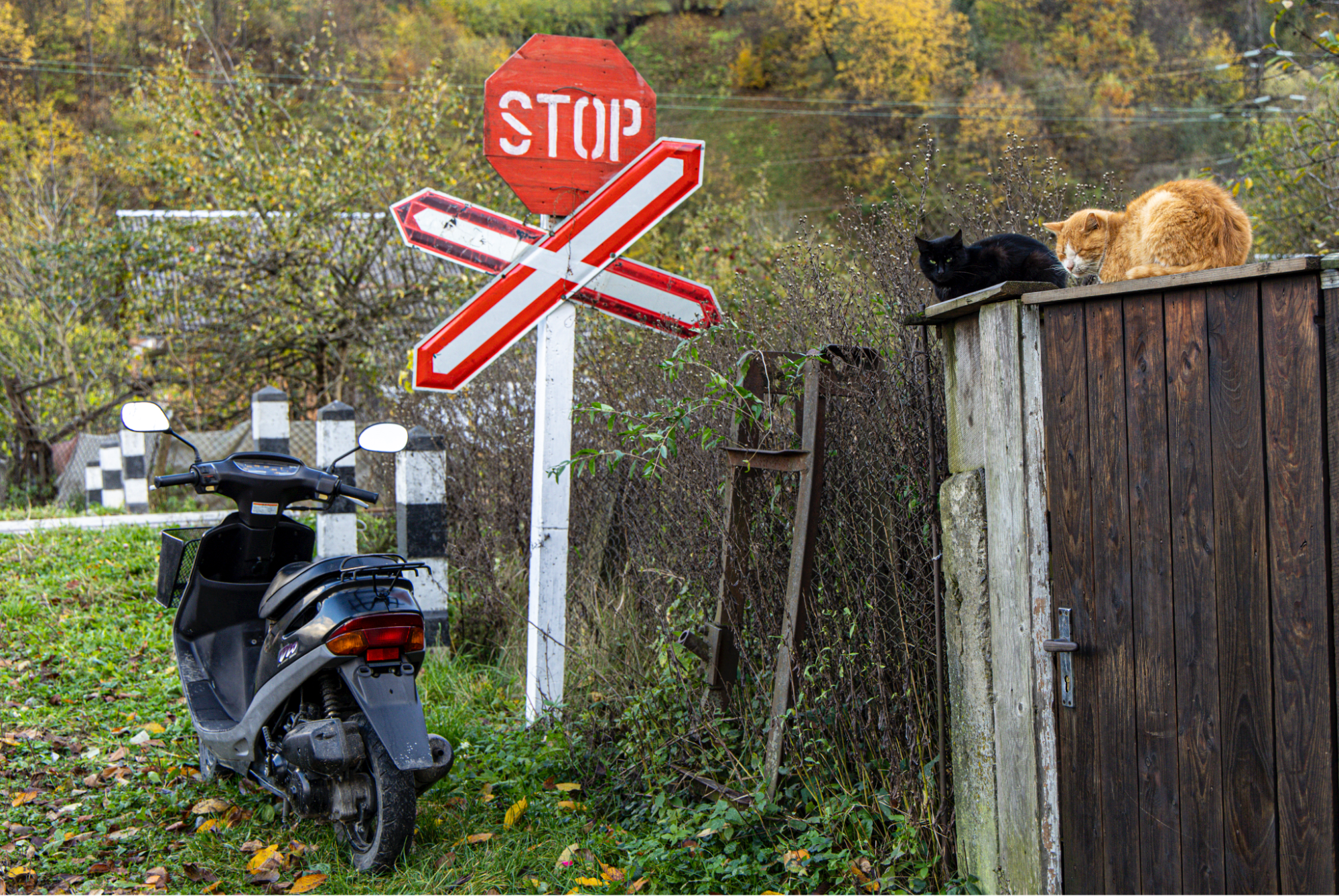
City of Rakhiv, Carpathian Biosphere Reserve. Photo: Mykola Tymchenko
The first and most necessary thing for the region is to create a waste processing plant and establish a garbage removal system. Beautiful nature with old forests, mountain rivers, and incredible landscapes has a vast potential to restore the ecosystem services people use so actively, but this potential is not infinite. All this beauty will remain if residents curb their consumer habits in time and learn to coexist with nature.
The project "Biosphere reserves of Ukraine: stories of war in nature conservation institutions, creating a green future" was created with the support of UNESCO. The designations used, and the presentation of the material do not imply the expression of any opinion whatsoever on the part of UNESCO concerning the legal status of any country, territory, city, district, or its authorities or concerning the delimitation of its borders. The author is responsible for selecting and presenting the facts in this article and the opinions expressed therein, which are not necessarily the opinions of UNESCO and do not bind the Organization.







